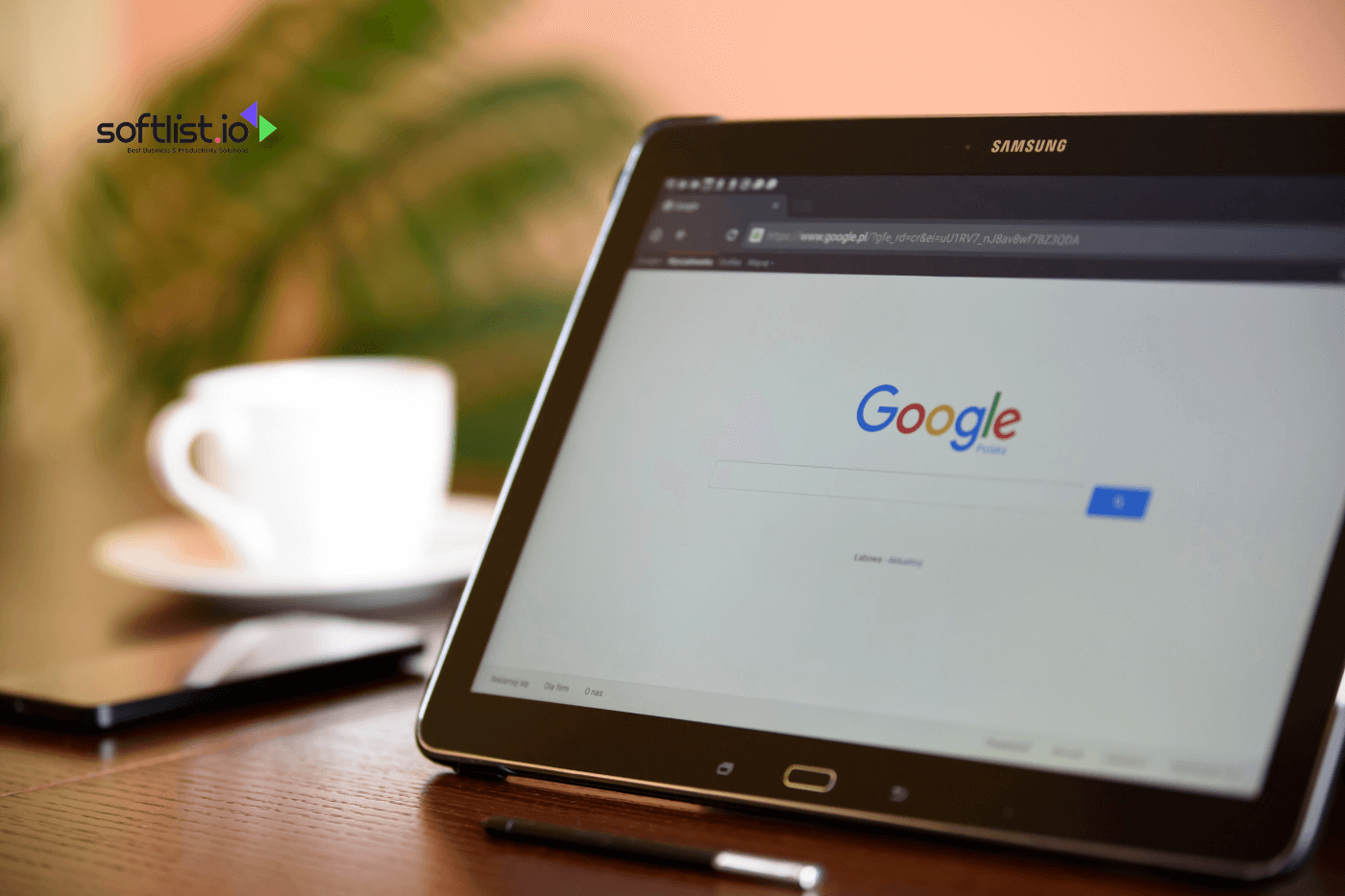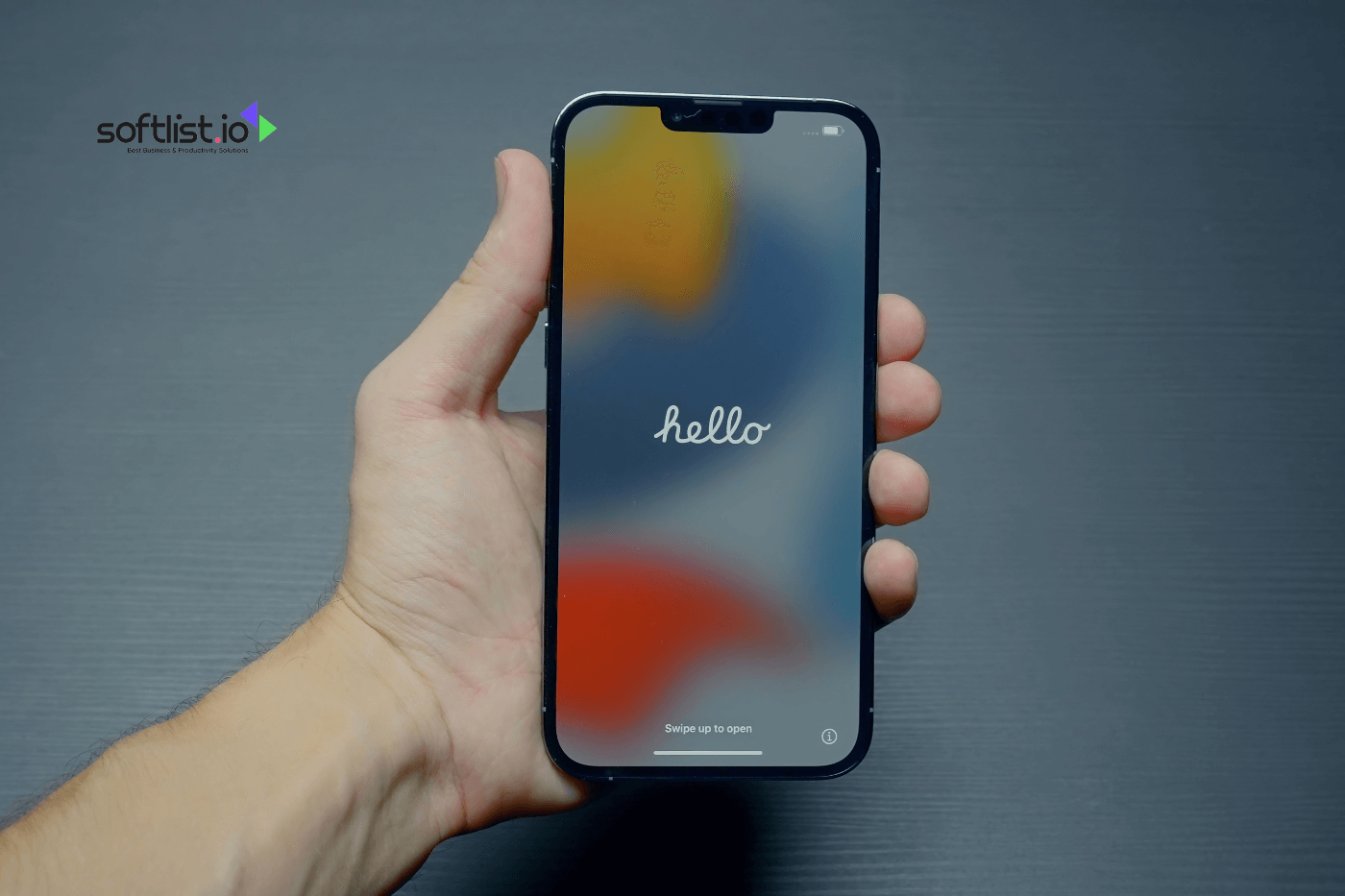When it comes to storing our photos, Google Photos and iCloud stand out. As individuals increasingly rely on digital platforms to safeguard their precious memories, the competition between these two tech giants intensifies.
Both Google Photos vs. iCloud offers an array of features and functionalities designed to cater to users’ diverse needs, but which one is the best choice for you?
So, let’s discuss each platform’s specific features and limitations to understand better which one best suits our individual preferences and needs and help you make a well-informed decision about where to store your photos securely.
What is Google Photos?

Source: Canva Pro
Google Photos is a cloud-based photo and video storage service developed by Google. With it, you can easily back up all your media files from your smartphones, tablets, and computers to Google’s servers, ensuring you never lose those precious memories.
What is iCloud?

Source: Canva Pro
iCloud is a cloud storage and computing service provided by Apple Inc. It’s seamlessly integrated into Apple’s ecosystem, syncing your photos, videos, documents, and app data across all your Apple devices, including your iPhone, iPad, Mac, and even your Windows PC.
With iCloud, you can breathe easy knowing your data is securely stored on Apple’s servers and accessible from anywhere.
Google Photos vs. iCloud: Price and Storage Plan
Google Photos provides a more generous free storage option, offering users 15GB of storage space at no cost. In contrast, iCloud offers a more modest 5GB for free.
This means that users of Google Photos have more room to store their photos without immediately needing to upgrade to a paid plan.
However, it’s important to note that while Google Photos offers more free storage, it is primarily designed for storing photos only.
On the other hand, iCloud allows you to save a variety of data types, including files, photos, messages, and more.
Here’s a breakdown of the pricing plans for both services:
| Storage Plan | iCloud Price (per month) | Google Photos Price (per month) |
| 5GB | Free | Free |
| 50GB | $0.99 | Not applicable |
| 100GB | Not applicable | $1.99 |
| 200GB | $2.99 | $2.99 |
| 2TB | $9.99 | $9.99 |
For those interested in further exploring the pricing plans and finding the option that best suits their storage needs. consider visiting the official pricing pages of both Google Photos and iCloud.
These pages offer the latest details on available plans, pricing updates, and any additional services that might enhance your photo storage experience.
Google Photos vs. iCloud: Features and User Experience
Google Photos offers a range of features aimed at enhancing user experience and maximizing the utility of the service:
- Access to Google Experts: Users with upgraded Google plans to gain access to Google experts who can assist with account-related queries, from file recovery to guidance on utilizing Google’s suite of products.
- Share Account with Up to Five People: Google Photos allows you to share your account with up to five individuals, facilitating collaborative photo organization and sharing in one centralized location.
- VPN for Multiple Devices: Google offers a VPN service to ensure secure web browsing and network encryption across various apps and browsers. This VPN, built using open-source software, aims to provide optimal security and protection against web trackers.
On the other hand, iCloud, particularly with an iCloud+ plan, offers additional features tailored to enhance cloud storage and security:
- iCloud Private Relay: Designed to maintain internet activity confidentiality, iCloud Private Relay encrypts outgoing traffic from your device to prevent websites from tracking your IP address or location.
- Hide My Email: This feature generates unique and random email addresses when signing up for new accounts or subscriptions, safeguarding personal information from companies and enhancing email security.
- Custom Email Domain: You can create personalized email addresses linked to your iCloud email, which can be used across various Apple services like Messages, FaceTime, and Calendar, further streamlining communication and organization.
- HomeKit Secure Video Support: Apple’s secure video service enables users to set up home security cameras, record footage, and access it remotely from any Apple device. Videos are not stored in the cloud but instead protected with end-to-end encryption. Depending on the iCloud plan, you can connect a varying number of cameras, with higher-tier plans offering support for an unlimited number of cameras and extended video access.
Google Photos vs. iCloud: Availability
While Google’s service tends to be more widely available across various platforms, iCloud’s accessibility is primarily limited to Apple devices.
Google Photos boasts broad compatibility, with dedicated apps for iPhone, iPad, Android devices, and even iMessage integration. The automatic backup feature works seamlessly across all supported devices, securely storing your photos and videos.
Additionally, you can access most features through a web browser, further enhancing accessibility and convenience.
On the other hand, iCloud Photos is primarily designed for Apple devices. While a web interface allows users to browse, upload, and manage photos and videos from a browser, the experience is somewhat limited compared to the iOS and macOS apps.
Key features such as automatic syncing, editing tools, shared albums, and robust search functionality are predominantly available within the iPhone, iPad, and Mac apps.
While iCloud Photos does offer some level of cross-platform functionality through its web interface, the full suite of features and seamless integration is best experienced on Apple devices.
In contrast, Google Photos provides a more consistent and comprehensive user experience across a wider range of devices and platforms.
Google Photos vs. iCloud Privacy and Security
Google Photos emphasizes its advanced security features and technology, assuring that uploaded, stored, or shared photos are protected.
Similarly, iCloud ensures the security of user messages, emails, and photos through end-to-end encryption, both at rest (stored on the device) and in transit (during transmission).
Both Google and Apple store user data in their respective data centers, employing stringent security measures to protect against unauthorized access.
However, it’s important to note that both companies retain the decryption keys to user files, allowing access if required by law enforcement or in cases involving suspected illegal content.
iCloud Photos vs. Google Photos: Upload, Sync, and Backup
Choosing between iCloud Photos and Google Photos involves considering how each service handles the upload, sync, and backup processes for photos.
Uploading Photos
Both iCloud and Google Photos offer user-friendly web interfaces for uploading images and videos from computers to cloud storage.
However, iCloud provides seamless automatic uploading from the Photos app on Mac, iPhone, and other Apple devices, eliminating the need for manual uploads.
Sync & Backup Photos
Google Photos allows users to sync and backup photos by enabling the “Backup & Sync” option in the settings, available on both iOS and Android devices.
On the other hand, iCloud’s automatic sync and backup are exclusive to Apple devices, meaning Android users must manually upload photos via the browser.
Google Photos vs. iCloud Photos: Editing and Searching
Editing Features
Google Photos emphasizes automatic color correction and stylized filters, providing users with quick and easy ways to enhance their photos. These editing features are accessible across devices when signed in with a Google account.
On the other hand, iCloud Photos offers more advanced editing capabilities, allowing users to adjust color levels and apply auto-corrections for quick improvements.
Additionally, you can access the full suite of editing tools available in Apple’s native Photos app, enhancing the editing experience on iPhone, iPad, and Mac devices.
Photo Searching
Google Photos stands out for its robust search capabilities, allowing users to search by date and location and by detecting individuals, places, and objects within photos.
This rich search functionality enables you to quickly find photos based on various criteria, enhancing the overall user experience.
In contrast, iCloud Photos does not offer advanced search capabilities. While users can manually add searchable keywords to photos, this process may be less intuitive and more time-consuming.
However, iCloud Photos does leverage iOS functions to distinguish faces and recognize objects within photos, albeit to a lesser extent than Google Photos.
Google Photos vs. Apple iCloud: Photo Sharing
When comparing photo-sharing capabilities between Google Photos vs. iCloud, both services offer options for sharing images with family and friends, but there are notable differences.
Google Photos:
- Supports sharing links for both individual photos and albums.
- Offers a user-friendly sharing interface with various sharing options.
- Allows for easy collaboration on shared albums, facilitating seamless sharing and viewing among multiple users.
Apple iCloud:
- Supports sharing links for individual photos only, rather than entire albums.
- Users may find sharing multiple photos more convenient through the Apple Photos app, which provides integrated sharing options across various apps and platforms within the Apple ecosystem.
While both Google Photos vs. iCloud offer photo-sharing capabilities, Google Photos provides a more comprehensive and versatile sharing experience, particularly with its support for sharing entire albums and collaborative sharing features.
However, for iOS and Mac users, leveraging the sharing options within the Apple Photos app may offer a more seamless and integrated experience.
What are the Limitations of Google Photos vs. iCloud?

Source: Canva Pro
Google Photos Limitations
- Storage Limits: While Google Photos offers a generous amount of free storage, it’s important to note that this storage is shared with other Google services like Gmail and Google Drive. Once you reach the storage limit, you’ll need to either delete older content, upgrade to a paid plan or risk losing access to new uploads.
- Compression: Google Photos offers free unlimited storage for high-quality photos and videos, but there’s a catch: photos and videos are compressed to save space. While this compression is generally acceptable for most users, professional photographers or those who require uncompressed storage may find this limitation restrictive.
- Limited Organization Options: While Google Photos automatically organizes photos based on factors like date, location, and content recognition, it may lack advanced organization features compared to other services. Users looking for more granular control over photo organization or the ability to create custom folders and tags may find Google Photos’ options to be limited.
- Privacy Concerns: Google’s business model relies heavily on advertising, and as such, there are privacy concerns regarding the data collected from user interactions with Google Photos. While Google claims to prioritize user privacy and offers controls over data sharing, some users may still feel uncomfortable with the level of data collection.
- No Private Folders: Unlike some other cloud storage services, Google Photos does not offer the option to create private folders or encrypted storage areas. This means that all uploaded content is stored in a single repository, potentially compromising privacy for users who wish to keep certain photos or videos separate from others.
iCloud Limitations
- Limited Free Storage: iCloud offers only 5GB of free storage, which can quickly fill up, especially for users with multiple Apple devices. This limited free tier may prompt users to upgrade to paid plans sooner than they would with Google Photos’ more generous free offering.
- Device Ecosystem Dependency: iCloud’s seamless integration is a double-edged sword. While it works flawlessly within the Apple ecosystem, users with devices from other manufacturers may find compatibility issues or limitations when accessing iCloud services.
- Price: While iCloud’s paid plans offer competitive pricing, they may not be as cost-effective as some of the offerings from other cloud storage providers. Users who require larger amounts of storage may find themselves paying more for iCloud compared to other services with more affordable pricing tiers.
- Limited Sharing Options: While iCloud does offer photo-sharing capabilities, including sharing links for individual photos, it may not be as versatile or user-friendly as some competing services like Google Photos. Users may find the sharing options within the Apple Photos app to be more limited compared to other platforms.
Google Photos vs. iCloud: Which One Should You Choose?
Choosing between Google Photos vs. iCloud ultimately depends on your specific needs and preferences. If you value extensive free storage, advanced organization, and cross-platform accessibility, Google Photos may be the better option.
On the other hand, if you prioritize seamless integration with Apple devices and services, iCloud may be the more suitable choice.
Ultimately, the best photo storage solution for you will depend on factors such as storage needs, device ecosystem, and desired features.
Regardless of your choice, both Google Photos vs. iCloud offer reliable cloud storage solutions to safeguard your precious memories for years to come.
For those looking to optimize their photo storage and organization further, exploring a robust file management system could be a game-changer.
Discover how the right file management system can enhance your digital organization by visiting us at Softlist, and to find out how the correct file management system may improve your digital organization.
Frequently Asked Questions about Google Photos vs. iCloud
Should I Buy iCloud or Google Storage?
iCloud is more integrated with Apple products, making it a seamless choice for iPhone, iPad, and Mac users. Google Storage (Google Drive) offers broader compatibility across different devices, including Android and Windows.
Can You Still Use Google Photos on Your iPhone?
Yes, you can still use Google Photos on your iPhone. The Google Photos app is available for download from the App Store, allowing iPhone users to backup, view, and manage their photos and videos using Google’s service.
Can I Use Both Google Photos and iCloud?
Yes, you can use both iCloud and Google Photos simultaneously. Many users choose to do this to take advantage of the unique features of both services, such as iCloud’s deep integration with Apple devices and Google Photos’ powerful search and organization capabilities.
Can I share albums with others on both Google Photos and iCloud?
Yes, both services allow you to create albums and share them with others. Google Photos offers shared albums that anyone with the link can view, add to, or comment on. iCloud Shared Albums lets you share photos and videos with selected people.
Can I edit photos directly within Google Photos and iCloud?
Yes, both Google Photos and iCloud offer built-in editing tools that allow you to adjust the appearance of your photos, including filters, cropping, and basic adjustments like brightness and contrast.






